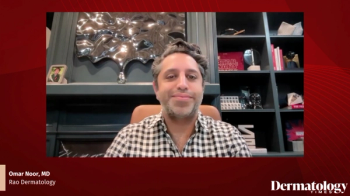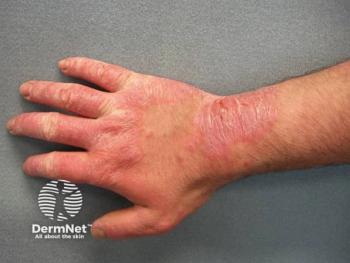
Eichenfield Urges Lifelong Learning Amid Evolving Treatment Landscape
Key Takeaways
- Pediatric dermatology is experiencing rapid therapeutic advancements, moving from observational to targeted innovations, particularly in systemic therapies for chronic inflammatory diseases.
- Accelerated access to treatments for psoriasis and atopic dermatitis in children marks significant progress, with systemic therapies like dupilumab and oral JAK inhibitors changing lives.
Eichenfield discussed the ever-evolving armamentarium, and how to navigate changes in the field.
At the
“Pediatric dermatology now is hitting this incredible age of rapid changes in our therapies,” Eichenfield said, emphasizing the field's shift from observation to targeted therapeutic innovation. He recounted the progress from serendipitous discoveries, such as propranolol for infantile hemangiomas, to more deliberate, science-driven advancements. “That wasn’t like people in the lab prospectively designing a drug. It was just people who recognized the utility of propranolol in treating someone with hypertension from steroids for their hemangioma.”
The pediatric dermatology landscape has notably evolved with systemic therapies for chronic inflammatory diseases. Eichenfield highlighted how regulatory lag once slowed access to psoriasis treatments in children, but progress has accelerated. “We’re fixing that up now,” he noted. Atopic dermatitis has also seen substantial advancement, with children now included earlier in systemic therapeutic trials. “Those breakthroughs, especially in the treatment of younger children with dupilumab and other systemic therapies, advanced systemic therapies, oral JAK inhibitors, just totally changing the lives of our individuals and families,” he said.
Eichenfield stressed the importance of lifelong learning for dermatology professionals. “The therapies that I bring on a regular basis every clinic are markedly different from 10 to 15 years ago,” he said. For trainees, the key lesson is to “always be humble about what we don’t know, and look to people who are cutting edge to help… because that’s going to allow us to do best for our patients.”
Looking forward, he anticipates 2 major developments: long-term data supporting early intervention in inflammatory skin disease, and breakthroughs in genetically targeted therapies for rare conditions. These innovations may move patients toward remission, reduce comorbidities, and potentially offer curative outcomes.
Reflecting on the SPD meeting, Eichenfield pointed to the more than 150 posters presented as evidence of the field’s growth. “Even in the field of pediatric dermatology, which is narrow compared to all of dermatology or all of pediatrics… the volume of research is going to continue to expand our choices,” he said. He also emphasized the irreplaceable value of in-person collaboration. “It also creates these relationships—partially networking, partially friendship building—that makes it fun to continue to advance the field and do stuff for our patients and families.”
As pediatric dermatology continues to mature, Eichenfield’s message is clear: this is a moment of remarkable progress, one that demands both innovation and connection.
Newsletter
Like what you’re reading? Subscribe to Dermatology Times for weekly updates on therapies, innovations, and real-world practice tips.



















